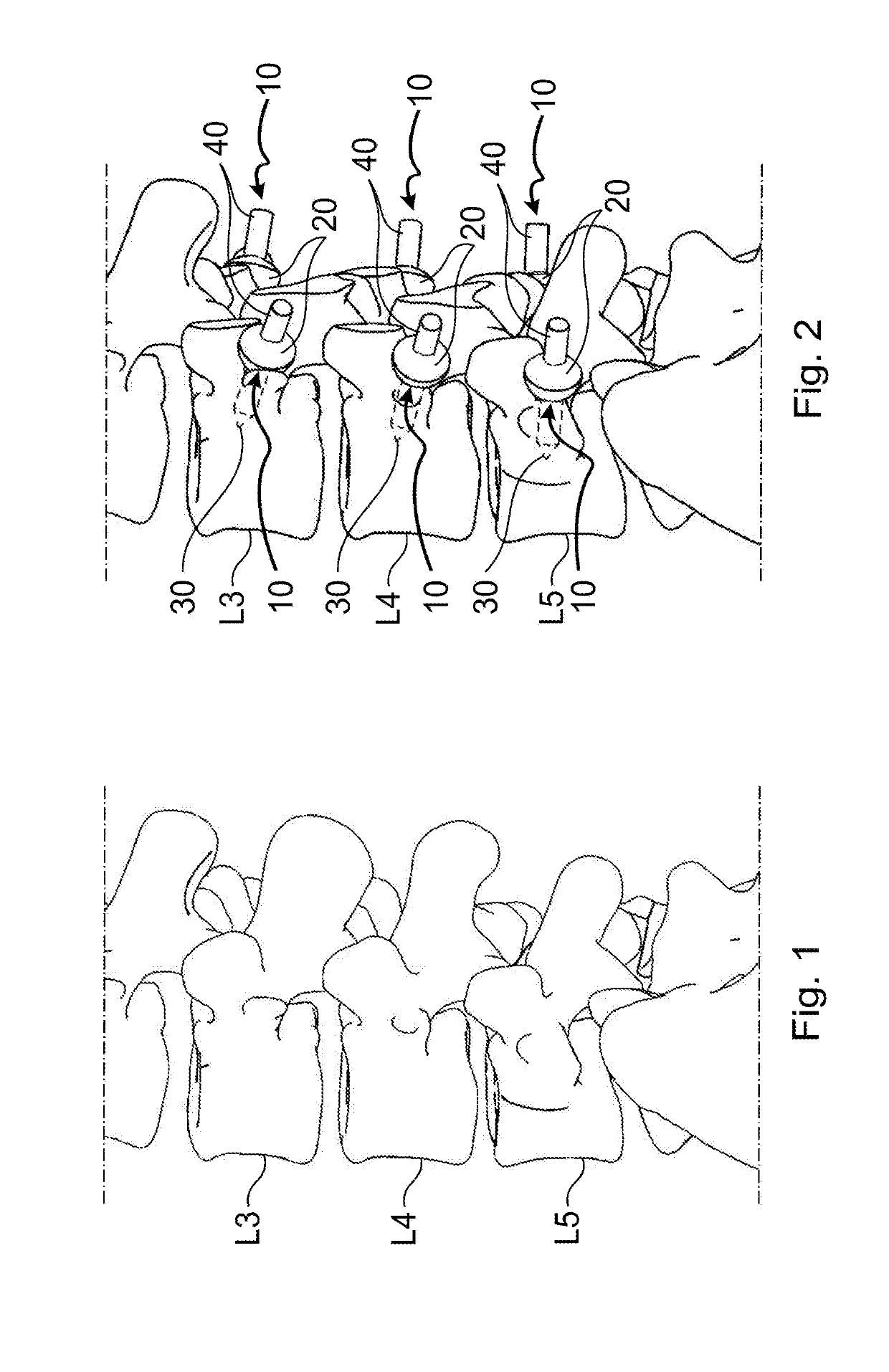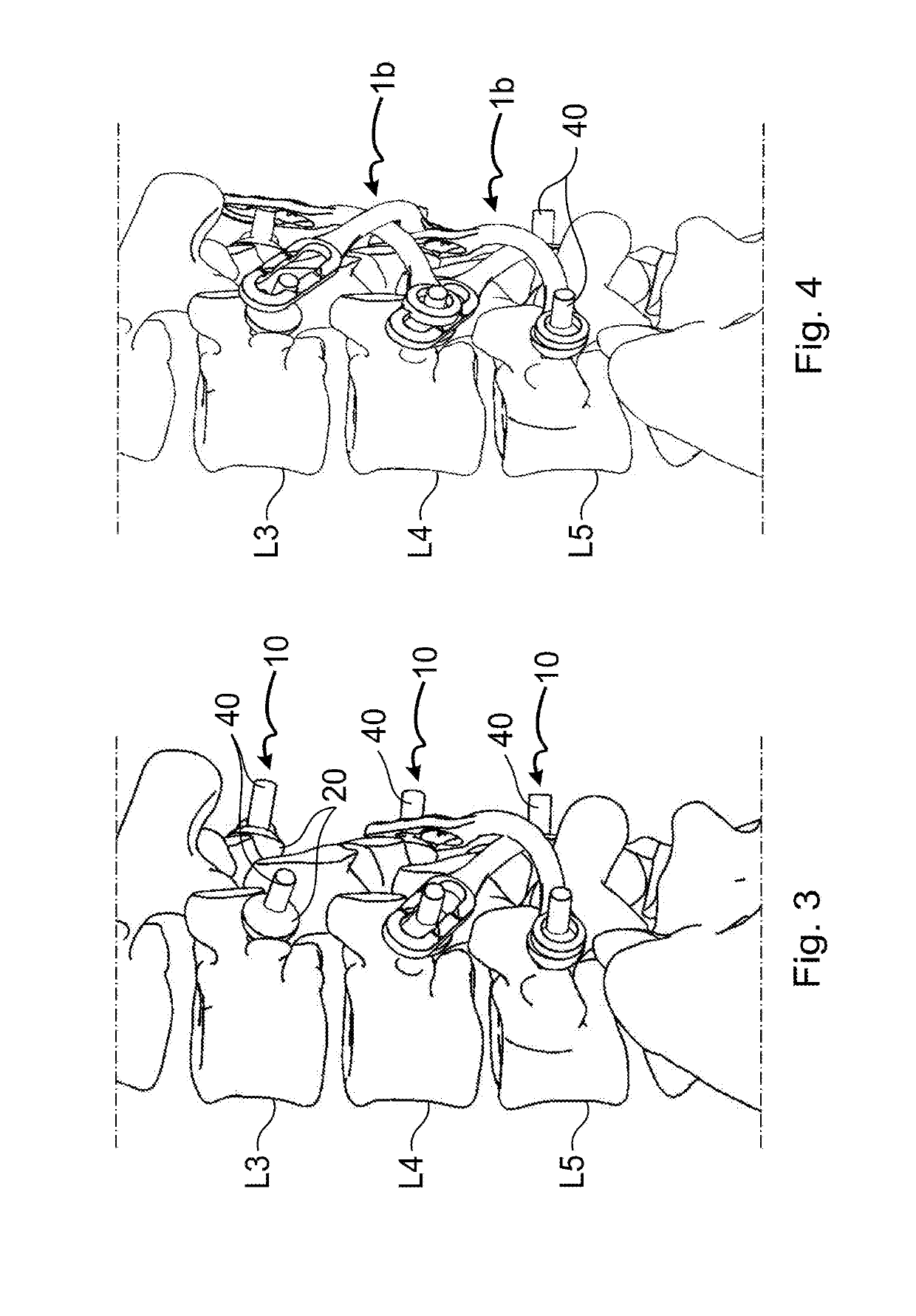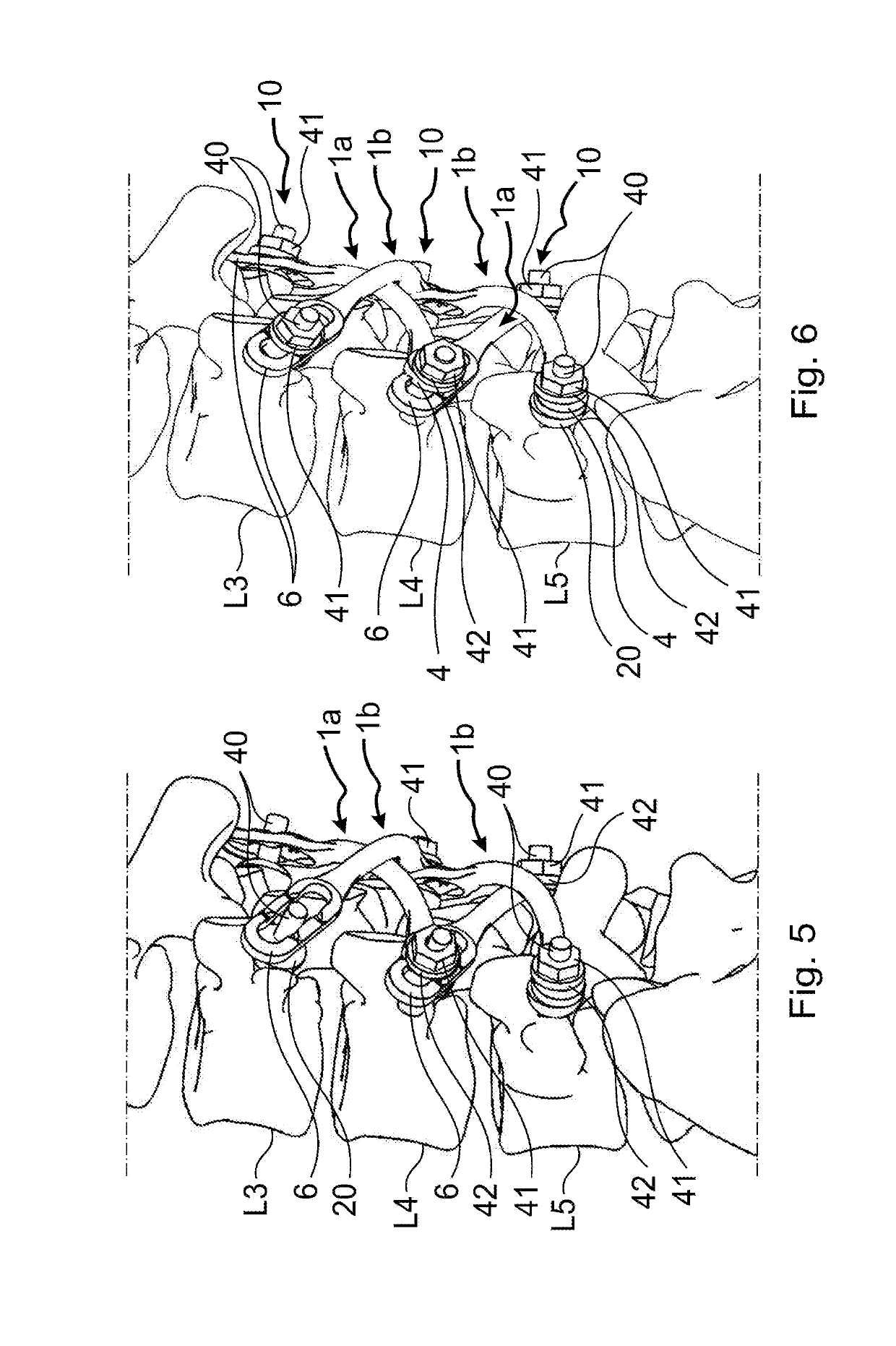Vertebral stabilisation device
- Summary
- Abstract
- Description
- Claims
- Application Information
AI Technical Summary
Benefits of technology
Problems solved by technology
Method used
Image
Examples
first embodiment
[0031]With reference to FIGS. 1 to 11, the vertebral stabilization device according to the invention comprises pairs of rods 1, forming main linking elements, arranged to connect two separate vertebrae to each other, and attachment elements 10 for attaching the ends of each rod 1 to the two separate vertebrae.
[0032]Each rod 1 extends along a median longitudinal plane containing a longitudinal direction of the rod. The rods 1 have a length, measured in this longitudinal direction, which is such that each rod 1 can extend diagonally between the two vertebrae to which it is attached, intersecting the median sagittal plane S of the vertebral column, the two rods 1 of each pair of rods 1 intersecting substantially at said median sagittal plane S.
[0033]The rods 1 have a curved central portion 2 (the center of curvature being located substantially in the median longitudinal plane), an end portion 3 provided with a ring 4 of substantially circular shape, and an end portion 5 provided with a...
second embodiment
[0058] the rods 1a, 1b each have a curved central portion 2, an end portion 3, and an end portion 5. The end portions 3 and 5 are here of constant cross section and are without a ring or loop.
[0059]Each attachment element 10 comprises a peg and a nut 42 with a base 42, identical to that of the first embodiment.
[0060]The attachment element 10 additionally comprises a body 50 or two bodies 50 depending on whether the attachment element 10 is used to fix one rod or two rods 1.
[0061]The body 50 comprises a tubular portion 51, which defines a seat 52 open along its entire length via a slit 53. From the edges of the slit 53 there extend two plates 54, which are parallel to each other and are separated from each other by a space with a width equal to that of the slit 53. The plates 54 have a hole 55 passing through them and are deformed in order to present a slightly frustoconical shape. The seat 52 has a diameter corresponding substantially to that of the end portions 3, 5, and the hole 5...
third embodiment
[0092]The attachment elements can directly comprise a complete collar arranged to be disposed around a transverse process, in order to fix there an end of at least one rod, instead of a collar formed of several elements, for example as described in the
[0093]The attachment elements can be arranged so as to fix just one rod.
[0094]Although the attachment elements have been described as being in the form of a rod, they can have other forms, The linking elements can be made of a material other than an organic material, for example of a metal such as titanium.
[0095]In one variant, the rods comprise an end portion provided with a ring and a straight end portion, and the attachment elements comprise a body of parallelepipedal shape which is slit along a plane and is provided with two seats for receiving, respectively, the straight end portion and the ring of two rods 1. The seats pass right through along two parallel axes contained in the plane P and corresponding to the direction in which ...
PUM
 Login to View More
Login to View More Abstract
Description
Claims
Application Information
 Login to View More
Login to View More - R&D
- Intellectual Property
- Life Sciences
- Materials
- Tech Scout
- Unparalleled Data Quality
- Higher Quality Content
- 60% Fewer Hallucinations
Browse by: Latest US Patents, China's latest patents, Technical Efficacy Thesaurus, Application Domain, Technology Topic, Popular Technical Reports.
© 2025 PatSnap. All rights reserved.Legal|Privacy policy|Modern Slavery Act Transparency Statement|Sitemap|About US| Contact US: help@patsnap.com



